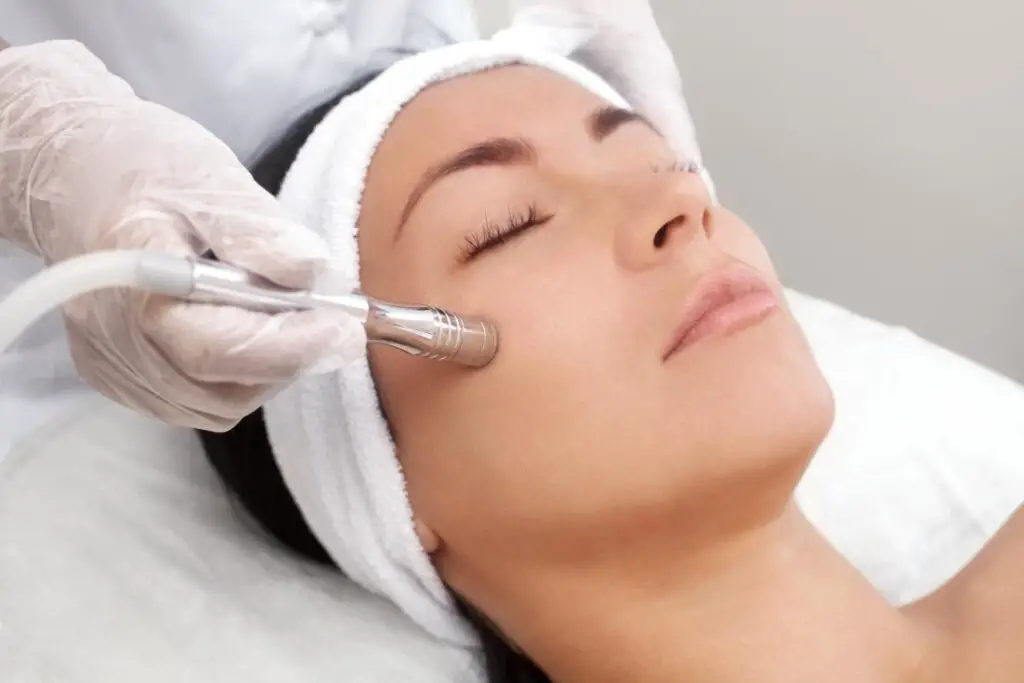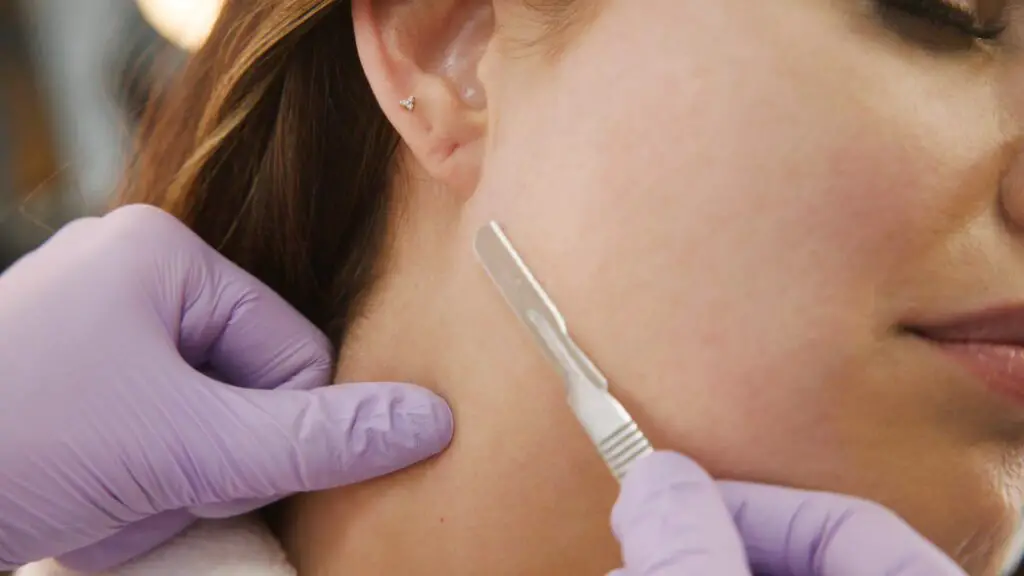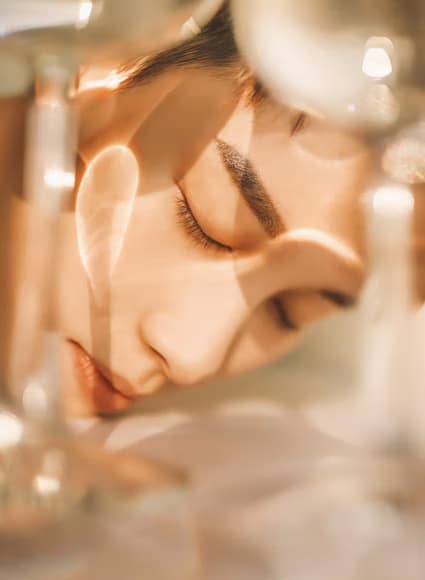Exfoliation is the surest way to great skin. Exfoliation helps get rid of all dead cells on your face, making it look brighter and newer. What’s more, it allows for greater penetration of skincare products and creates a smooth canvas for makeup to glide on flawlessly.
Microdermabrasion and Dermaplaning are two of the most common forms of exfoliation. These processes have the same goal-to restore your skin’s epidermis layer. Each of these processes uses different tools to exfoliate and rejuvenate your skin. Microdermabrasion, for instance, uses tiny crystals to blast away surface-level dead skin cells while Dermaplaning gently shaves off the top layer with a sterile scalpel.
Because of their functional similarity, many people find it difficult to choose between the two. In this blog post, we take an in-depth look at what microdermabrasion and Dermaplaning exfoliation processes entail to help you understand whether it’s safe to use them together.
Microdermabrasion

Courtesy of Medical News Today
Microdermabrasion is a non-chemical, non-surgical exfoliation process that uses a spray of microcrystals to remove the top layer of dry, dead skin cells to reveal younger, healthier-looking skin. This method also encourages the production of a new underlying layer of skin cells with higher levels of collagen and elastin, which again helps improve skin appearance.
Microdermabrasion is used to treat various skin conditions, including acne scars, enlarged pores, melasma, fine lines, wrinkles, and sun damage. It also helps promote blood circulation and brighten the skin tone by increasing product absorption.
It requires a minimum of five sessions to see rewarding results. It also requires about a week of recovery time before you can start applying makeup. This method works best for people with non-sensitive skin.
Dermaplaning

Courtesy of Today.com
Dermaplaning is an exfoliation procedure that uses a specialized surgical scalpel to remove dead skin cells, peach fuzz, and other facial hairs. Dermaplaning is an effective exfoliation method for people suffering from acne scars and sun damage.
This method is also an effective anti-aging treatment that helps remove vellus hair from the face, which can dull your appearance over time. What’s more, this procedure is suitable for all skin types and does not require any recovery time.
Differences Between Microdermabrasion and Dermaplaning
Microdermabrasion and Dermaplaning are two popular skin treatments that offer excellent results. Although the two methods are surface-level treatments, there are some fundamental differences between them. To begin with, microdermabrasion uses a tool with tiny crystals or diamond flakes to exfoliate the top layer of the skin, while Dermaplaning is a manual exfoliation treatment that uses a sterile scalpel to remove dead skin cells and vellus hair.
Moreover, microdermabrasion does not remove the facial hairs and will only work on the enlarged pores, fine lines, wrinkles, and melasma. Another difference between these two methods is that Dermaplaning can be used on all skin types, while microdermabrasion is recommended for non-sensitive skin types.
So, Which One Is Right for You?
The right treatment method for you between these two procedures will depend on your skin needs, type and preference. If you, for instance, have highly sensitive skin, you should avoid the more abrasive microdermabrasion and settle for the less impacting Dermaplaning. Again if you do not have the time to wait for your skin to cool and heal from the procedure, try to avoid microdermabrasion that requires one to wait for up to one week before applying any makeup.
Another factor to consider when choosing between these two procedures is your skin needs. If you, for instance, need to get rid of enlarged pores, microdermabrasion is the treatment for you. If you are struggling with vellus hair and aging signs such as wrinkles and fine lines, you should consider opting for Dermaplaning, that’s known to treat this condition effectively.
Can You Do Microdermabrasion and Dermaplaning Together?
Although these two methods help exfoliate and remove dead skin cells from your skin, they do not perform the same functions. Following this, you may be tempted to try them both to reap the maximum benefits that they have to offer. But is this really possible?
Yes, it’s possible to have both microdermabrasion and Dermaplaning done together on you. This, however, requires special care during and after the procedure. To be on the safe side, ensure to get your services from a certified physician who should start with the less aggressive procedure-Dermaplaning and follow it up with microdermabrasion.
Doing these two procedures together will help you achieve better results within the shortest time. It will also boost your blood circulation and collagen production resulting in stronger skin tone.
Takeaway
Microdermabrasion and Dermaplaning carry the day as some of the best alternatives to chemical-based exfoliating methods that may irritate your skin. When performed by a certified dermatologist or esthetician, these two procedures will help make your skin feel smoother and more radiant.
The right method for you will depend on your skin needs, type and situation. If you, for instance, have an upcoming event and need an exfoliation method that won’t require any recovery time, Dermaplaning is the way to go. If you also have overly sensitive skin and need something gentle, this is again the method to go for.
If you, however, have a normal skin type and aren’t worried about waiting for close to a week for your skin to recover, you should consider going for microdermabrasion which will not only help minimize your enlarged pores but also help fight signs of aging.
Alternatively, you can have the two procedures performed on you for maximum benefits. Nevertheless, ensure to do your background research and find a certified practitioner who will not only give you the best results but also take care of your health during the entire process.
Whatever you decide to have done on you, ensure to consult your dermatologist and give a truthful history to avoid regrettable repercussions. Although experts consider these two treatments to be safe for most people, you should avoid them if you are pregnant or breastfeeding.
Moreover, talk to your doctor if you have certain conditions, such as rosacea or eczema, before signing up for these procedures. Lastly, ensure to stay away from these procedures when healing open wounds on your face or under medications that increase your skin sensitivity.
